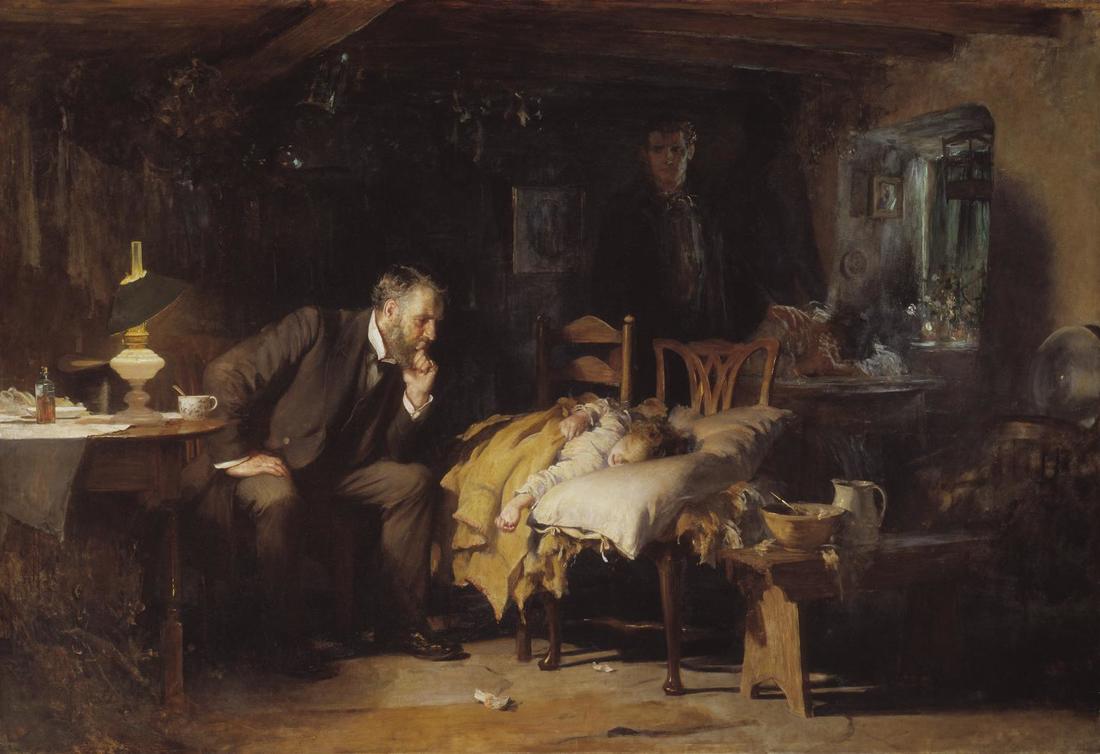|
This tragic scene of a child's death hung in my doctor’s office when I was a young woman. It is The Doctor, painted by Luke Fildes in 1891 in memory of his own son’s death at one year old. Something often forgotten about the pre-industrial era is the death rate from childhood disease.
The first diphtheria vaccine was not produced until the 1920s. Before then, 100,000 - 200,000 cases occurred each year in the U.S. and 15,000 - 20,000 deaths. Called ”the Plague among Children,” diphtheria was once a dreaded disease, with frequent large-scale outbreaks. An epidemic between 1735 and 1740 in New England killed eighty percent of children under ten years old in some towns. In 1613, an epidemic of diphtheria in Spain was known as “El Año de los Garrotillos,” The Year of Strangulations. In the 1830s, Europe was hit with waves of deadly diseases: scarlet fever, diphtheria, typhoid fever, typhus and cholera. To this one must add deaths from diseases with lower mortality rates, including measles and whooping cough, which as recently as this decade, 60 years after vaccines for them became available, still kill more than 300,000 children annually worldwide. Vaccination programs have decreased the incidence of diphtheria; however, when vaccination rates drop, infection rates rise and serious outbreaks occur, as in the 1990s when an epidemic in Russia caused about 5,000 deaths.
0 Comments
|
Rose KleidonNever quit asking "Why?" This motto works out well for a researcher. Archives
June 2022
Categories
All
|
Website by Kleidon & Associates

 RSS Feed
RSS Feed